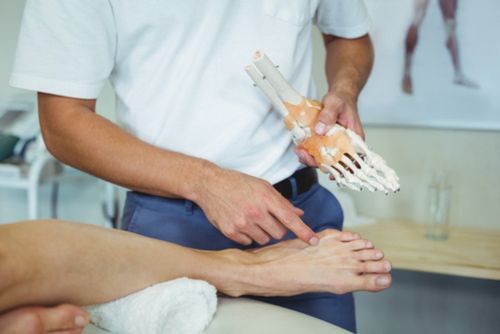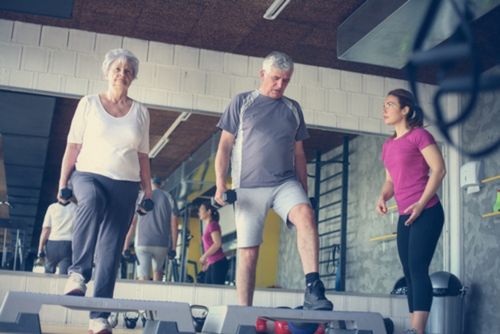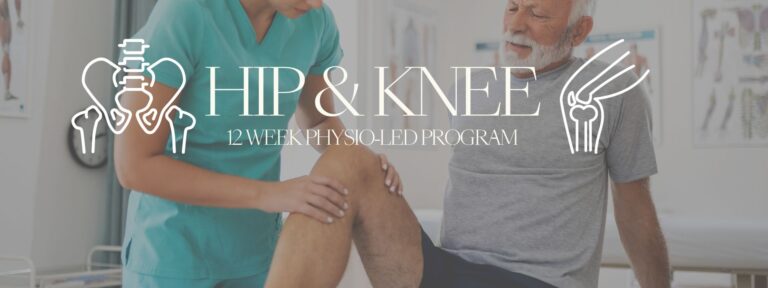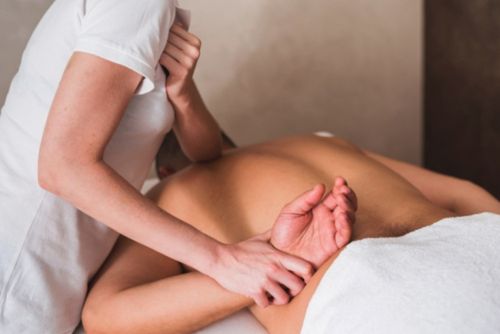Physiotherapy the way it should be...
If
you’re looking for a physiotherapy clinic that’s different from the rest, look
no further. Our clinic is located within a private 200 sqm fitness facility in
the heart of the CBD, offering a fresh approach to rehabilitation. Instead of
relying on a traditional office setting, we believe in a functional gym-based
approach that enables us to rebuild the best version of you.
Our
philosophy is centred around exercise-based rehabilitation, with an emphasis on
long-term recovery. We provide a guided and progressive exercise program that’s
designed to help you achieve your goals, whether you’re recovering from an
injury or looking to improve your overall health and wellness. But we don’t
just stop there. We’re also dedicated to helping you become better equipped for
whatever adventures life has in store for you. That’s why we aim to bulletproof
you for the future, ensuring that you’ll be ready for whatever challenges come
your way. Trust us to help you achieve your rehabilitation goals and get back
to living your best life.
Check out why we are different
10 week hip and knee progran
Are you suffering from chronic hip or knee pain? Don’t know what to do? Have a look at our 12 week hip and knee program and take advantage of our free 15 min telehealth call to discuss what options you have and the best path forward.
(click the image below for more information)
Select Service
At Sydney Sports Physio + Fitness, our goal is to be the best physiotherapy and rehabilitation clinic in Sydney’s CBD. We achieve this by offering three core services that are essential for your recovery – physiotherapy for accurate injury assessment, rehabilitation classes to help you reach your long-term goals, and remedial and sports massage to keep your body in top condition.
Physiotherapy

A modern approach to physiotherapy
At Sydney Sports Physio + Fitness, we’re passionate about delivering the highest quality, evidence-based care to our clients. Our physiotherapy services cover a diverse range of conditions, such as back, shoulder, neck, knee, and hip pain, sporting injuries, posture-related pain, osteoarthritis and osteoporosis, workplace injuries, and pre- and post-surgical treatment, among others.
Rehabilitation

Rebuild like a professional
At Sydney Sports Physio + Fitness, we offer physio-led rehabilitation sessions that are customized to your individual requirements. Our sessions follow a format similar to those used by elite sports teams, but with the important distinction that you’ll be working at your own intensity level and striving to meet your personal goals.
Sports Massage
Recover like a professional
They say if you service your car more than you get a massage then you are looking after the wrong machine…
It’s true
Regular massage improves your ability to both train harder and perform better.
Don’t treat yourself, its maintenance!
Online Booking
Initial Consultation (up to 1 hour) – For new injuries needing a full assessment
Standard Consultation (30 min) – For returning clients seeking follow up appointments for one injury
Long Consultation (45 min) – For returning clients seeking follow up appointments for two separate injuries or complex cases
Online Booking
Initial Consultation (up to 1 hour) – For new injuries needing a full assessment
Standard Consultation (30 min) – For returning clients seeking follow up appointments for one injury
Long Consultation (45 min) – For returning clients seeking follow up appointments for two separate injuries or complex cases
Have a read of our latest blog on Back pain
LOWER BACK PAIN TREATMENT IN SYDNEY CBD
Experiencing lower back pain is a common occurrence that many of us have encountered or will encounter at some point. It’s crucial to first ensure that your lower back pain isn’t associated with any red flags, highlighting the importance of a thorough assessment by a healthcare professional.
Lower back pain is never random but rather specific to underlying causes. To effectively address the pain, it’s essential to identify these underlying causes, which often contribute to a dysfunctional movement pattern and lead to the overloading of certain structures in the lower back.
Properly progressed exercises play a vital role in treating and preventing lower back pain. One effective initial step toward reducing your pain is to focus on bracing the core and activating the glute muscles.
Lower back pain can truly be a pain in the literal sense. We’ve all experienced that dull ache from sitting for prolonged periods or a sudden sharp pain resulting from lifting weights improperly at the gym.
Prioritize Differentiation and Assessment
First and foremost, it’s crucial to differentiate whether your lower back pain is associated with any red flags indicating a more serious condition. These red flags, such as unrelenting night pains, numbness/tingling around the genitals, down both legs, and decreased bladder/bowel control, require immediate further investigation from a health professional.
Understanding the Causes
Lower back pain can stem from various factors, including underlying dysfunctional movement patterns or prolonged periods of sitting. To effectively manage ongoing lower back pain and regain functionality, a comprehensive physical assessment is necessary to identify contributing factors. Once these causes are identified, a tailored rehabilitation program, accompanied by a range of manual therapies, can be implemented to alleviate the pain and help you return to your preferred activities.
The Power of Controlled Movement
Although back pain can sometimes make exercise and movement seem impossible, controlled and intentional movements that are properly progressed can provide immediate relief. By engaging in controlled movement designed to address underlying dysfunctions and build strength, you’ll experience significant results. This approach is not only effective in alleviating lower back pain but also serves as a preventive measure, reducing the chances of recurring pain.
Addressing Dysfunctional Mechanisms
Dysfunctional mechanisms contributing to lower back pain can vary, ranging from stiff hips caused by chronic sitting to joint aggravation resulting from overloading. Additionally, overworked muscles surrounding the spine and hips and a lack of spinal stability due to a weak core can also be contributing factors.
The Role of Manual Therapy
While manual therapies such as massage, trigger point release, dry needling, cupping, and massage guns can provide temporary relief and improve mobility, they shouldn’t be considered as a standalone solution. It’s important to capitalize on the temporary relief provided by manual therapy and use that opportunity to engage in exercises that maximize the benefits of movement and promote tissue stability in the lower back. Investing in a long-term fix requires consistent progression of strength and stability.
Practical Tips to Reduce Lower Back Pain
In many cases, certain bracing methods applied to the core and the activation of glute muscles can instantly reduce lower back pain. Activating the core is particularly important, as it provides stability to the spine. Just like guy-wires supporting a radio tower, the core surrounds and stabilizes the spine, limiting micro-movements and shearing forces that can cause pain and instability.
To effectively brace the core:
- Take a deep breath in through the nose.
- Brace your stomach as if you are about to be punched in the stomach.
- Hold the brace strong for 5 seconds.
- Continue to brace while allowing yourself to breathe and maintain core stability.
Once you have a good grasp of core bracing, incorporate it into functional movements such as slow squats or when carrying heavy objects. You’ll notice that having a braced core. By incorporating these techniques into your daily activities, you’ll notice that having a stable core and activated glutes can significantly reduce lower back pain and improve your overall functionality.
Another crucial aspect of managing lower back pain is directing load and tension to the glutes, which are among the largest supporting muscles for the spine’s foundation. One effective exercise to target the glutes is the banded double-legged glute bridge. Lie on your back with a band around your knees, then split the band with your knees and drive your heels into the ground while tucking your bum under your spine. At the very top of the movement, drive through the heels and push the knees out, holding for three seconds. Repeat this for six reps and feel your glute muscles activate.
These simple strategies can provide relief for your lower back pain. However, to achieve long-term pain relief and reach your goals, it’s essential to follow a progressive exercise program tailored to your specific needs. The experienced team at Sydney Sports Physio and Fitness is here to support you on your journey to becoming pain-free. Don’t hesitate to reach out and start your personalized rehabilitation program today.
Remember, taking the necessary steps to understand and address the underlying causes of your lower back pain is crucial for long-term relief and improved functionality. Through targeted exercises, proper core bracing, glute activation, and a comprehensive rehabilitation program, you can regain control over your lower back health and live a pain-free life.



